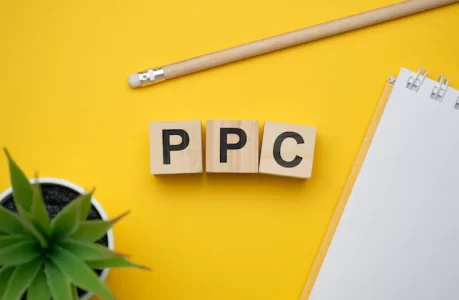Navigating The Programmatic Buying Landscape: A Comprehensive Guide To Dsps For Smart Investment Strategies

The evolution of ad tech never stands still. Undeniable giants like Google Ads or Facebook Ads still maintain their impressive market shares. However, programmatic buying has already entered the stage, and it is getting more and more popular.
In 2023, the programmatic digital display advertising expenditure will reach around 142 billion US dollars in the year 2023. In fact, it was predicted that programmatic advertisement was expected to get 80% of all digital ad spending in the United States by 2024.
But how exactly does this technology work? What benefits does it have for advertisers? This article is here to answer these questions and help you optimize your advertising strategy to increase the conversion rate.
Programmatic Buying: Definition And Role In The Investment Landscape
The concept relies on three main components. As a marketer, you will use a DSP, which stands for a demand-supply platform. In turn, publishers leverage an SSP, a supply-side platform. Thus, an ad exchange plays the role of an intermediary between them.
How programmatic works
The steps involved in the process are as follows:
- Step 1: You sign up for a DSP and set up your campaign. You create an ad and specify the targeting characteristics of your audience and the preferable cost per thousand impressions (CPM).
- Step 2: On the SSP side, publishers provide data about their page viewers and submit it to the platform. They also set up the minimum amount they require for a thousand impressions. The bid request then goes to DSP.
- Step 3: Your bid on the impression is sent to the ad exchange. There, it takes part in the RTB (real-time bidding) auction. This process occurs automatically.
- Step 4: After the auction is over, the winning ad is delivered to the publisher and displayed to the target audience.
Thus, programmatic buying (also known as programmatic advertising) can be defined as purchasing and selling digital ad inventory automatically.
The Importance Of Programmatic Buying
Those days are gone when both the parties, publishers and advertisers, used to reach out to each other manually for the ad serving process. The process was a little time-consuming as well as complicated at times.
The process comprised looking for relevant people, sending proposals, negotiating, doing the order insertion manually, and many more.
Since the programmatic advertisements came into play, things have become a lot easier. The programmatic buying brought ad automation, effectively saving time and work.
Why programmatic is cost-effective
Programmatic buying has significantly redefined the ad investment landscape by eliminating hidden fees and the involvement of third parties.
You have full control over your ad spend. A DSP will not set your desired CPM — you do this on your own, which means potential cost savings. Besides, some DSPs allow automatic adjustment of your bids to keep them at the competitive level without overspending. This way, your ad investments are smart and controllable.
For publishers, programmatic is cost-effective, too. Since they also set the minimum price, they do not have to worry about unprofitable deals.
How Dsps Can Ensure Optimization
Cost-effectiveness is not the only benefit of signing up for a demand-side platform. Let’s review other advantages:
- Automation. Using a DSP means automating the process of finding a relevant ad placement. You will not have to look for the right space on your own; the platform will do this for you. As a result, you will have more time for your core tasks.
- Acceleration. Bidding and impression delivery — these and other processes common in programmatic buying. One must be competent enough to perform them within a couple of milliseconds. You set everything up, and your ad is delivered to the audience in a moment. You will not have to wait for your ad review or its approval.
- Relevance. You do not buy a specific ad placement — you “purchase” a target audience. Your ad can be displayed on any website (connected to programmatic) with user data relevant to your settings. Thanks to AI as well as ML, your advertisement is visible to relevant users who are most likely to convert.
- Precise analytics. DSP platforms allow convenient tracking of all the essential metrics like CTR (click-through rate), conversion rate, and others. With these insights in mind, you can improve your future ad campaigns. Some platforms also offer predictive analytics to help you optimize your ads in advance.
- Scalability. Programmatic ad campaigns are easy to scale, as you have access to publishers from all over the world. This way, you can enhance your reach.
Top 13 Dsps To Consider
There are multiple demand-side platforms, and this guide on the 13 best DSPs will help you make a choice. To dive deeper into the benefits of programmatic buying, let’s review one of them, SmartyAds.
The features of SmartyAds DSP
SmartyAds DSP is a self-serve platform allowing you to launch AI-powered campaigns with ease. The key features are as follows:
- The ad formats are banner, video, native, rich media, audio, and DOOH (digital-out-of-home) ads. The platform supports mobile web, desktop, in-app, and CTV advertisements.
- Secondly, targeting settings include age, gender, location, language, time of the day, timezone, browser, device, and many more. It is also possible to run retargeting campaigns to attract users who have already expressed interest in your offer.
- You can limit your daily spending to gain even better control over your budget. Limiting the number of daily impressions per IP/visitor is also supported.
- The Adaptive CPM feature adjusts your bids to keep them at the optimal level.
- The self-learning mechanism of the Click Booster feature can help you drive more clicks.
- You can create black- and whitelists to make sure that your ads reach the right publishers at the right time. Multiple additional filters are available as well.
- The Autoresize feature will automatically adapt your creatives to fit the ad placements.
- Advanced analytics features allow measuring the performance of your campaigns and tracking all the required metrics.
- Ad fraud protection mechanisms help you receive only high-quality traffic.
The Differences Between Programmatic Buying And Traditional Media
Programmatic buying has revolutionized media buying in this present fast-paced digital landscape. You may wonder about the differences between Programmatic Buying and Traditional Media. Let’s break it down!
This is the old method of advertising: Traditional Media.
- TV Commercials: You book a slot on a popular program, hoping your target audience is watching.
- Print ads: You put an ad in a magazine and hope that the reader you want will read it.
- Radio spots: You buy airtime during a specific program, hoping your listeners are tuned in.
These methods are effective for reaching thousands of people, but you may never know who is really seeing your ads. Programmatic Buying is this relatively new player in the media market:
This campaign makes use of algorithms and data to get precise targeting information before targeting.
- Real-time bidding: One can buy Ads and sell in live auctions, allowing people to change them according to their performance rapidly.
- Digital focus: One uses online advertisements like display, video, and social media ads.
Think of it this way: Traditional media is like sending a postcard to everyone living around you. Programmatic buying is like sending an email to each of them, considering his interest.
To Sum Up
Using a programmatic DSP platform is the way to automate and optimize advertising processes, as well as to save budget. With its help, you can remain competitive in the digital advertising ecosystem and increase your conversion rate along with your income. At the same time, the amount of manual work will be reduced significantly.
When choosing a DSP, start with identifying your needs. For instance, you may want to deliver CTV ads, but not every platform may support this format. You must clearly understand what audience you need to reach and how you want to do this.
After this, review the features of every potential solution carefully. Pay special attention to basic functionalities, such as targeting options, ad formats, etc. To make a final choice, consider additional features that can help you reach better results and the platform’s reputation.


























Leave A Reply